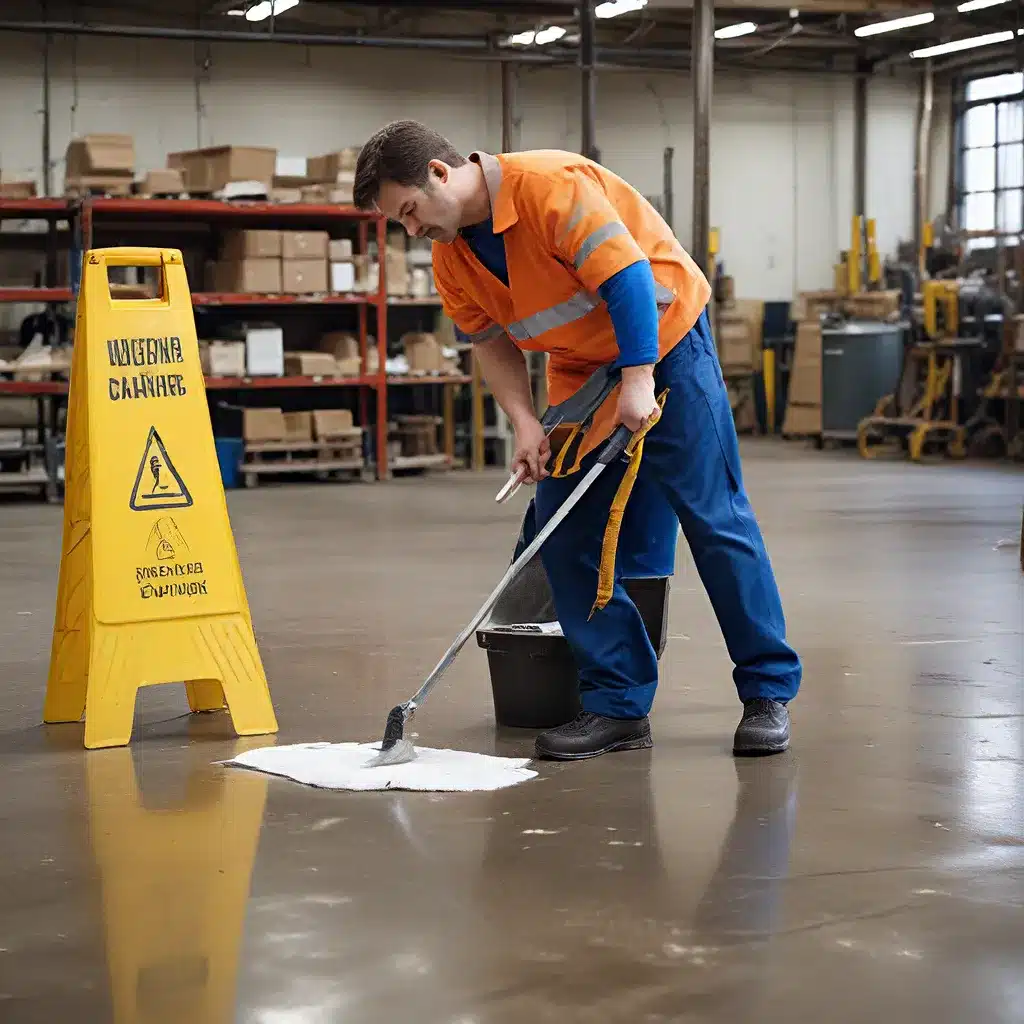
Workplace Safety: A Balancing Act
Imagine this scenario: You’re a manager at a bustling industrial facility, responsible for overseeing a team of hardworking employees who keep the gears of production turning. Your days are filled with the constant hum of machinery, the clanking of tools, and the occasional shouts coordinating the next big project. It’s a dynamic, high-stakes environment where efficiency and safety must go hand-in-hand.
As you walk the factory floor, you can’t help but feel a tinge of unease. Workplace accidents are an ever-present concern, and you know all too well the devastating impact they can have – not just on your employees, but on the entire organization. A single mishap can lead to spiraling medical bills, lost productivity, and a tarnished reputation.
It’s a delicate balancing act, isn’t it? On one hand, you need to push your team to keep up with the demands of the business. But on the other, you have a moral and ethical obligation to ensure their safety and well-being. How do you strike that perfect equilibrium?
Unveiling the Hidden Culprits
As I dug deeper into the issue of workplace accidents, I uncovered some fascinating insights. Turns out, the root causes often lurk in the most unexpected places.
Poor lighting, for instance, can be a veritable minefield waiting to trip up unsuspecting employees. Imagine a dimly lit warehouse, where workers are tasked with navigating tight corridors and maneuvering heavy equipment. It’s a recipe for disaster! And let’s not forget about the hazards of dehydration – something that can easily sneak up on individuals working in hot, physically demanding environments.
But the dangers don’t stop there. Inadequate training, faulty machinery, and even cluttered workspaces can all contribute to a heightened risk of accidents. It’s enough to make your head spin, isn’t it?
Crafting a Comprehensive Accident Prevention Plan
Faced with this multifaceted challenge, the temptation might be to throw up your hands in despair. But not so fast! As an experienced manager, you know that the key to tackling workplace safety lies in a well-thought-out, comprehensive plan.
The first step? Developing a detailed accident analysis and prevention strategy. This goes beyond simply posting a few safety signs and calling it a day. It’s about taking a deep dive into the unique risks and hazards present in your specific work environment, and then systematically addressing each one.
Think of it as a puzzle that needs to be meticulously assembled. Do you have the right personal protective equipment (PPE) in place? Are your employees trained on proper lifting techniques? Have you assessed the adequacy of your lighting and ventilation systems? Each piece must fit together seamlessly to create a sturdy, reliable framework for accident prevention.
Empowering Employees, Boosting Morale
But a comprehensive safety plan is only as effective as the people who implement it. That’s why it’s crucial to get your employees on board – not just as passive participants, but as active contributors to the cause.
Encourage them to speak up about any concerns they have, whether it’s a tripping hazard or a malfunctioning piece of equipment. After all, who knows the ins and outs of the workplace better than the individuals who toil away there day in and day out?
And don’t forget the power of regular training sessions. By keeping your team up-to-date on the latest safety protocols and best practices, you’re not only bolstering their knowledge, but also demonstrating your commitment to their well-being. Imagine the boost in morale when your employees feel truly valued and prioritized.
Continuous Improvement, Unwavering Vigilance
Of course, the work doesn’t stop there. Safety in the workplace is an ongoing battle, one that requires constant vigilance and a willingness to adapt.
That’s why it’s crucial to regularly evaluate your workplace for potential risks – whether it’s a slippery floor, a malfunctioning piece of equipment, or a change in operations that introduces new hazards. And when accidents do occur (and they inevitably will), treat them as opportunities to learn and improve.
Conducting thorough accident analyses, pinpointing the root causes, and implementing corrective measures can help you stay one step ahead of the curve. It’s a never-ending cycle of vigilance, adaptation, and continuous improvement – one that separates the truly safety-conscious organizations from the rest.
Reaping the Rewards of a Safe Workplace
The payoff for all this hard work? A safer, more productive, and more engaged workforce – one that’s primed to take on the challenges of the industrial world with confidence and peace of mind.
Think about it – when your employees feel secure in their work environment, they can devote their full attention to the task at hand. No more worrying about potential accidents or getting injured on the job. Just pure, focused productivity.
And let’s not forget the financial benefits. By reducing the number of workplace accidents, you’re slashing the associated costs – from medical bills to workers’ compensation claims to legal liabilities. It’s a win-win situation that can have a profound impact on your bottom line.
So, my fellow industrial managers, let’s embrace the challenge of workplace safety head-on. By implementing smart, proactive strategies and fostering a culture of vigilance and continuous improvement, we can create the kind of environments where our teams can thrive – and our businesses can truly soar.
After all, Inland Waters Inc. is committed to not just keeping the wheels of industry turning, but doing so in a way that prioritizes the well-being of our most valuable assets – our employees. It’s a responsibility we take seriously, and one that will continue to drive us forward in the years to come.


